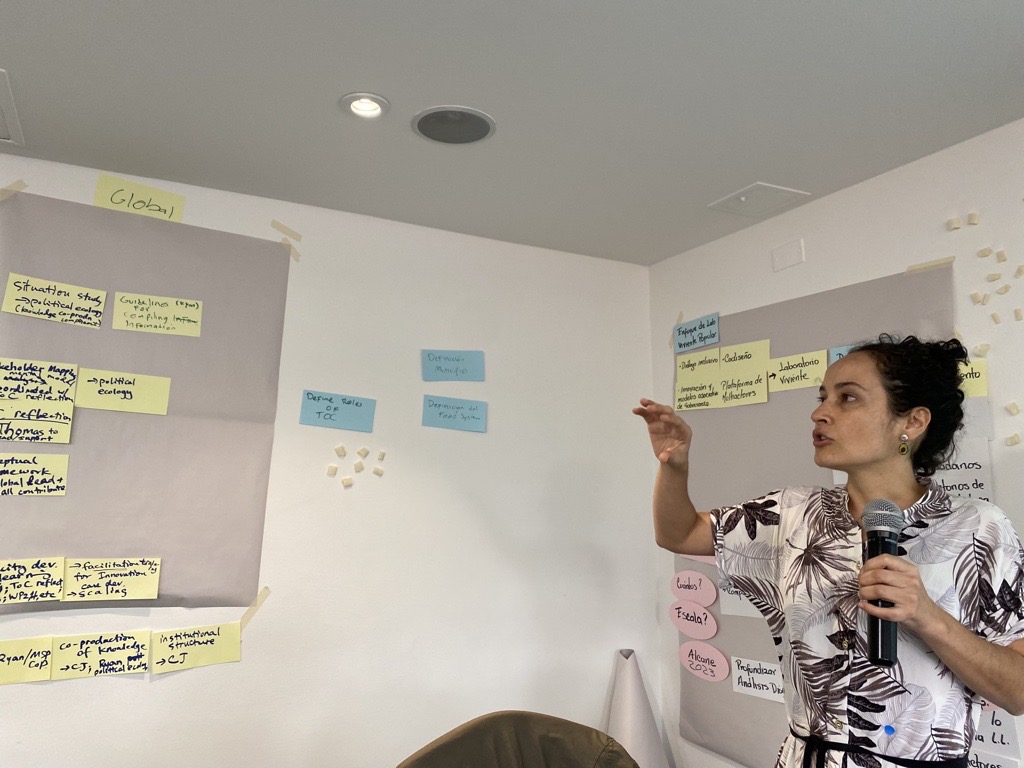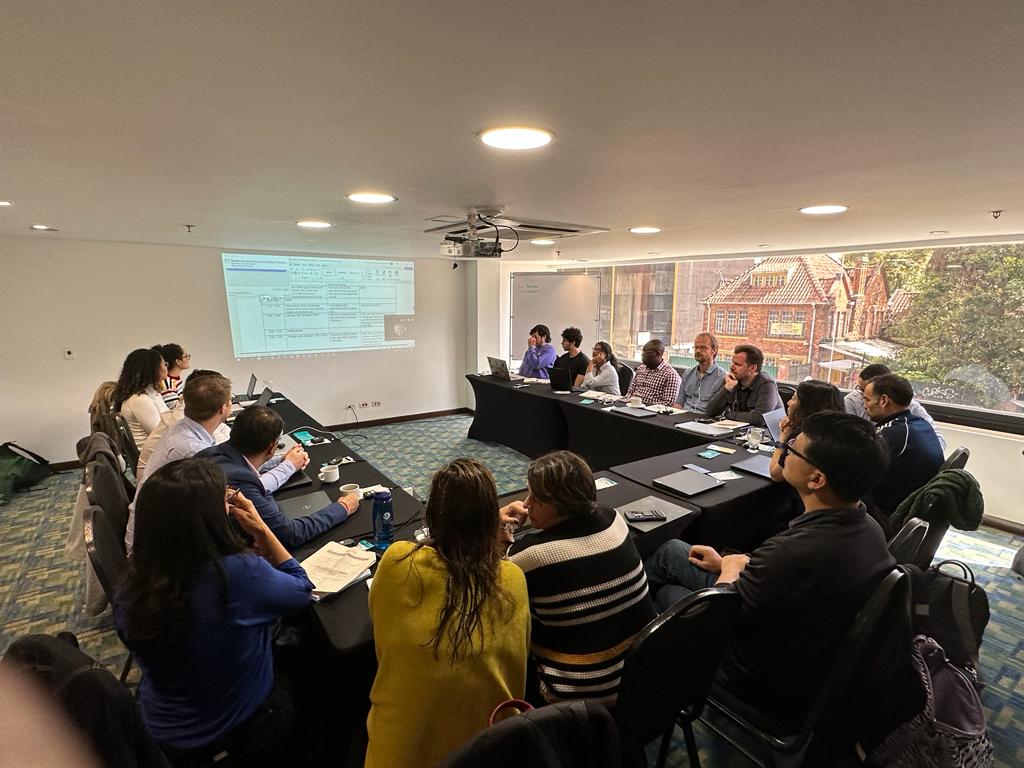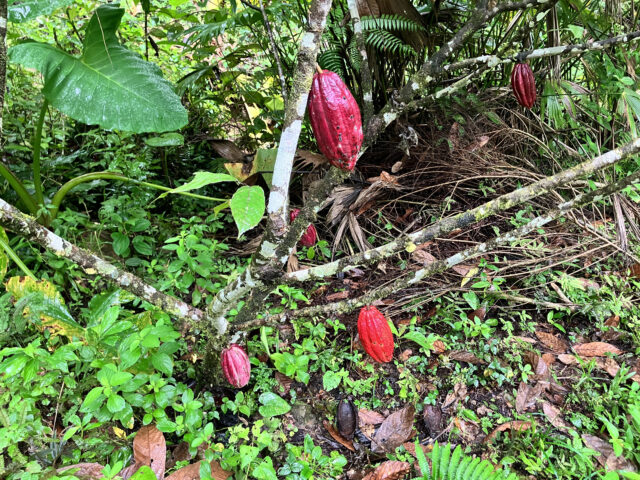
By Birgit Habermann, Eva Marina Valencia Leñero and Ryan Nehring
Sometimes projects introduce a new concept that has, at the outset, little meaning other than a word. And then through engagement of different scientists, stakeholders and partners working together, this word acquires real meaning and starts becoming an actionable concept. This process is not always smooth and requires a lot of patience, confidence and respect for each other’s different opinions, interests, schools of thoughts and positionalities – and if operating on a global level, also for different cultures.
For us, a group of scientists in a work package dedicated to Living Labs (WP3) in the CGIAR Research Initiative on Low-Emission Food Systems, the concept of a Living Lab is one such example. Although not new to others, it is new for us. Intrigued by the term, we embark on this journey of giving it a meaning, a meaning that serves to promote low-emission food systems in the countries with whom and where we are working.
This blog explains the process we are going through to find a definition, and to agree upon principles for a “Living Lab for People” (LL4P). While the Initiative is working in China, Colombia, Kenya, and Vietnam, we focus only on Kenya and Colombia in this blog. The teams at these two sites started the process with similar backgrounds and assumptions, while in China and Vietnam, the understanding of the living lab was less clear at the outset- which also reflects the highly diverse interpretation of the living lab concept in the literature.
Our descriptive term “Living Lab for People” (LL4P) stands for a more participatory concept than the original explanation of living labs in literature. For example, testing new technologies driven by external interests with citizens (a classic living lab approach) is not our focus. Instead, the LL4Ps should be owned by citizens and food system stakeholders and filled with their ideas and innovations based on a shared interest in a better future for the food systems in which they work and live.
In short, we understand living labs as a space for citizens and specific stakeholders to create and test new ideas, and to meet with other supporting actors, such as scientists and practitioners, to develop these ideas further.
We are asking ourselves: who could be part of the living labs? Who could support these innovations and modalities of governance?
Interviews with the site coordinators suggest that these can also be policymakers, market entrepreneurs or investors that can scale the local innovations, and even consumers that could use these innovations themselves. If we want an inclusive citizen-centric approach, then this requires careful planning of citizen representation in the LL4P, to ensure inclusivity and equitable access on the one hand, but also sufficient consideration of what the actual users need and want themselves – ideally looking at what is already out there in practice amongst them.
Yet, each site in the Initiative’s four countries –China, Colombia, Kenya, Vietnam – adapts the LL4P for their specific contexts and needs. Here, we want to highlight the progress in Colombia and Kenya as emblematic of the LL4P concept we are developing.

The Work Package 3 team for Kenya visiting the LL4P site at Kaimosi Agricultural Training Centre in Nandi County. Photo by: Birgit Habermann/ILRI.
The first site that advanced the original ideas further is in Kenya. The team developed a conceptual framework for the country level, and a situational analysis helped to better understand the factors and conditions for low-emission food system development in Nandi County. The framework describes the LL4P as a platform to create an enabling environment where different stakeholders in engaging with Nandi county citizens can work to develop a common vision, discuss the potential for low-emission food system development pathways, learn what already exists to build upon in terms of locally led innovation, and to create funding opportunities for such innovation cases.
As such, the LL4P fundamentally relies on a local host with a vision to improve locally led innovations – this host is the Kaimosi Agricultural Training Centre in Nandi County. The idea is to continue developing the LL4P as an ongoing process, not just the result of one project, but as a place that citizens and stakeholders feel ownership for. Additional partners are Eldoret University and the County Government of Nandi.

Figure 1. Imagination of the LL4P in Kenya in April 2023 – this depiction adapted by the WP3 coordinator in Kenya is just a snapshot in time, will continue to evolve, and might look differently after one year of engaging with diverse partners in Nandi County.
At the site in Colombia, the LL4P is seen by country partners similarly as a platform that should facilitate dialogue between stakeholders. These country partners are Javeriana University and the University of the Amazonia (a local public university). This platform aims at uniting people from different sectors regarding their (sometimes contradictory) wills, and to come together jointly to create innovations and knowledge that will serve their community. The LL4P intends to strengthen the participatory work that Javeriana University has done in the region. The selected site is Caqueta department, municipalities of Montañita, Belen de los Andaquies and Morelia. There the country partners want to develop activities to understand which information is required to solve a common challenge in the region in an equitable and favorable way for different stakeholders, from different parts of the food system.
Looking at the Kenyan and the Colombian model for an LL4P, we understand that both models state an inclusive role for different stakeholders in the value chain to participate in the LL4P. However, they both recognize the challenge that motivation for participation is not always obvious and even contested. It is not easy for different stakeholders to see why they should get involved in a living lab and give time, and resources, for it.

Planning workshop in Bogota, Colombia carried out in April 2023. Photo by: Ma. Eliza Villarino/Alliance of Bioversity International and CIAT.
To address this challenge, a selection of the right partners must be made, and develop good communication with them. Moreover, we still have to work harder to understand how to develop an LL4P model that is self-sustaining. Some ideas are to develop evidence on what has worked well, develop local ownership and capacities in the region, and a financially sustainable mechanism after the project ends. This will then be connecting global issues with local actors so they can have beneficial effects when addressing complex issues such as low-emission development. However, this will only occur if the discourse remains connected with what these local actors consider relevant in their everyday lives.
The aims of the LL4P are informed by the different contexts the two sites are embedded in: in Kenya, there is a common interest among the different Kenyan stakeholders by involving them from the beginning of the process. It is important to find what is there to build on, and this will depend on who the stakeholders are at the site – a useful exercise for this is for example net mapping in carefully facilitated net mapping workshops. Thus, the specific goals are not pre-set, as they are part of the visioning and negotiation process between different stakeholders to define what the LL4P means for them.
There are, however, already existing ideas for identifying and supporting locally led innovations: In Colombia, this will be facilitated by a platform initiated by two universities where people can discuss low-emission food system development, see the benefits for themselves, and try out different approaches. The country team’s goal is to co-produce knowledge with local stakeholders leading towards innovations for lower emissions, peacebuilding, social capital building, and well-being. For this, there needs to be a territorial logic built into the living lab that can generate both global benefits and local and sustainable peace-building transitions. How this territorial logic fits into the LL4P concept is yet to be decided and will be part of a collaborative process with local stakeholders.
One of the major lessons we have learned on our journey to understand what meaning we can give to a Living Lab for People is that even though there will always be differences between the understanding and interpretations of an LL4P at different sites – and between different scientific disciplines – there are also many similarities. There is the question of how to create motivation for people to engage in the living lab, and to work together to make it a sustainable institution independent of a project.
Furthermore, any conceptual framework needs to provide room for the LL4P to adapt to the context it is embedded in and to address the very specific challenges in that place. It is not a concept that can be streamlined easily as a template to function – or pretend to function – along our imaginations of what it should be. Fundamentally, the vision for the LL4P, and its goals, as well as the involvement of stakeholders will be equally determined by the context of the LL4P and the agenda of the actors driving it forward as an institution with its own purposes and objectives.
Acknowledgement:
We acknowledge the intellectual contributions of the WP3 team made to the LL4P conceptual framework development. Part of this blog was based on interviews done by Eva Marina Valencia Leñero with country representatives for the living labs in China, Colombia, Kenya, and Vietnam.
See more information on Mitigate+ here.
Photo credit: Martha Vanegas explains the activities and roles of local partners and Mitigate+ team / Neil Palmer / Alliance of Bioversity-CIAT



